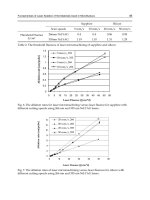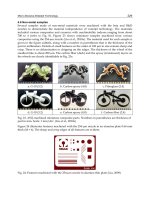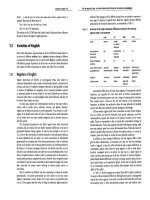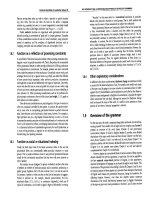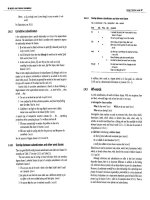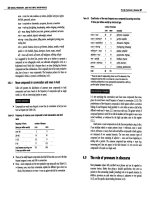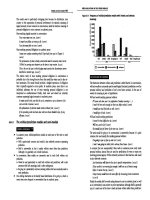Chapter 109. Disorders of Platelets and Vessel Wall (Part 4) potx
Bạn đang xem bản rút gọn của tài liệu. Xem và tải ngay bản đầy đủ của tài liệu tại đây (64.71 KB, 5 trang )
Chapter 109. Disorders of Platelets
and Vessel Wall
(Part 4)
Table 109-
1 Drugs Definitively Reported to Cause Isolated
Thrombocytopenia
a
Abciximab Digoxin
Acetaminophen Eptifibatide
Acyclovir Hydrochlorothiazide
Aminosalicylic acid Ibuprofen
Amiodarone Levamisole
Amphotericin B Octreotide
Ampillicin Phenytoin
Carbamazepine Quinine
Chlorpropamide Rifampin
Danazol Tamoxifen
Tirofiban
Diatrizoate meglumine (Hypaque
Meglumine)
Trimethoprim/sulfamethoxazole
Diclofenac Vancomycin
a
Drugs that pr
eceded thrombocytopenia and full recovery occurred after
drug discontinuation, but recurred with re-
introduction of the drug, and other
causes, including other drugs were excluded.
Source: Data from George and colleagues,
Classic drug-dependent antibodies are antibodies that react with specific
platelet surface antigens and result in thrombocytopenia only when the drug is
present. Many drugs are capable of inducing these antibodies, but for some reason
they are more common with quinine and sulfonamides. Drug-dependent antibody
binding can be demonstrated by laboratory assays, showing antibody binding in
the presence of, but not without, the drug present in the assay. The
thrombocytopenia typically occurs after a period of initial exposure (median
length 21 days), or upon reexposure, and usually resolves in 7–10 days after drug
withdrawal. The thrombocytopenia caused by the platelet GpIIbIIIa inhibitory
drugs, such as abciximab, differs in that it may occur within 24 hours of initial
exposure. This appears to be due to the presence of naturally occurring antibodies
that cross-react with the drug bound to the platelet.
Heparin-Induced Thrombocytopenia
Drug-induced thrombocytopenia due to heparin differs from that seen with
other drugs in two major ways. (1) The thrombocytopenia is not usually severe,
with nadir counts rarely <20,000/µL. (2) Heparin-induced thrombocytopenia
(HIT) is not associated with bleeding and, in fact, markedly increases the risk of
thrombosis. HIT results from antibody formation to a complex of the platelet-
specific protein platelet factor 4 (PF4) and heparin. The antiheparin/PF4 antibody
can activate platelets through the FcγRIIa receptor and also likely activates
endothelial cells. Many patients exposed to heparin develop antibodies to
heparin/PF4, but do not appear to have adverse consequences. A fraction of those
who develop antibodies will develop thrombocytopenia, and a portion of those (up
to 50%) will develop HIT and thrombosis (HITT).
HIT can occur after exposure to low-molecular-weight heparin (LMWH),
as well as unfractionated heparin (UFH), although it is about 10 times more
common with the latter. Most patients develop HIT after exposure to heparin for
5–10 days (Fig. 109-3). It occurs before 5 days only in those who were exposed to
heparin in the prior few weeks or months (< ~100 days) and have circulating
antiheparin/PF4 antibodies. Rarely, thrombocytopenia and thrombosis begin
several days after all heparin has been stopped (termed delayed onset HIT). The 4
"T"s have been recommended to be used in a diagnostic algorithm for HIT:
thrombocytopenia, timing of platelet count drop, thrombosis and other sequelae
such as localized skin reactions, and other cause of thrombocytopenia not evident.
Figure 109-3
Time course of heparin-
induced thrombocytopenia (HIT) development
after heparin exposure.
The timing of development after heparin exposure is a
critical factor in determining the likeliho
od of HIT in a patient. HIT occurs early
in heparin exposure only in the presence of preexisting heparin/platelet factor 4
(PF4) antibodies, which disappear from circulation by ~100 days following a prior
exposure. Rarely, HIT may occur later after heparin exposure (termed delayed-
onset HIT
). In this setting, heparin/PF4 antibody testing is markedly positive. HIT
can occur after exposure to either unfractionated heparin (UFH) or low-molecular-
weight heparin (LMWH).
